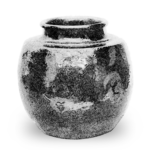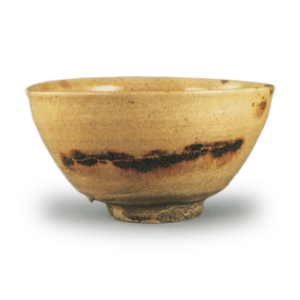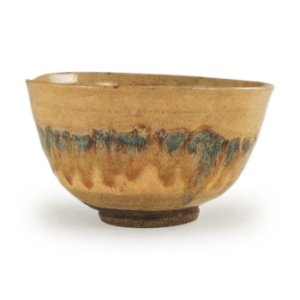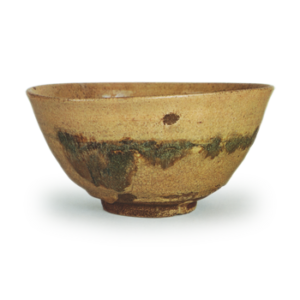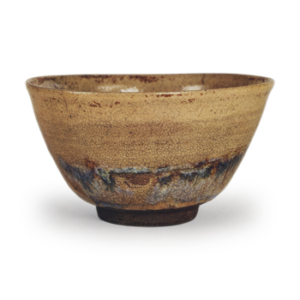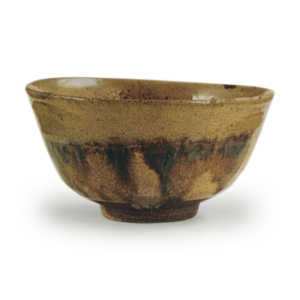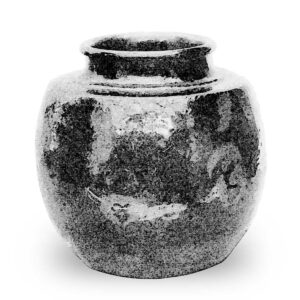
A great masterpiece. A tea caddy by Han. It is also known as “Kinoshita katatsuki” or “Miyako katatsuki” (meaning “return to Tokyo”). The “Matsuya Nikki” (Matsuya Diary) says, “Tanemura katatsuki is in the possession of Lord Tanemura of Omi. He later became a member of the Kinoshita family and was called Kinoshita hara-jyusyu. During the great fire of 1657 in Edo (Tokyo), Tanyu’s house was also set on fire, and he ordered his family to flee with it, but the fire spread so fast that the family threw it down by the roadside and narrowly escaped. Later, a Kyoto-based skip picked it up, brought it home, and sold it to a karamono dealer named Sogen Tachibanaya. Tachibanaya thought that he would be punished later if it had belonged to a high family or the shogunate in Edo, since it was a karamono tea container that had been picked up in the great fire in Edo. Chikanari, who had long enjoyed tea ceremonies and was a close friend of Tanyu, immediately learned that it was in Tanyu’s possession and replaced the 300 kan that Tachibanaya had paid for it, and notified Tanyu. Tanyu immediately sent one of his students with the money to receive the tea caddy. This is why he is said to have returned to the capital. It is not known where it was after his death, but when Matsudaira Fumai asked for it, it was in the possession of Iseya Jiroemon. It is short for a tea caddy, and has a so-called “half-shoulder” shape. The bottom of the bowl is made of a wooden plate, and the overall color is covered with an ame-iro glaze peculiar to karamono, as well as a blue-white snake-scorpion glaze, which is streaked in two layers. There is also an omission of glaze around the right hand side of the body, which gives a change to the scenery.

